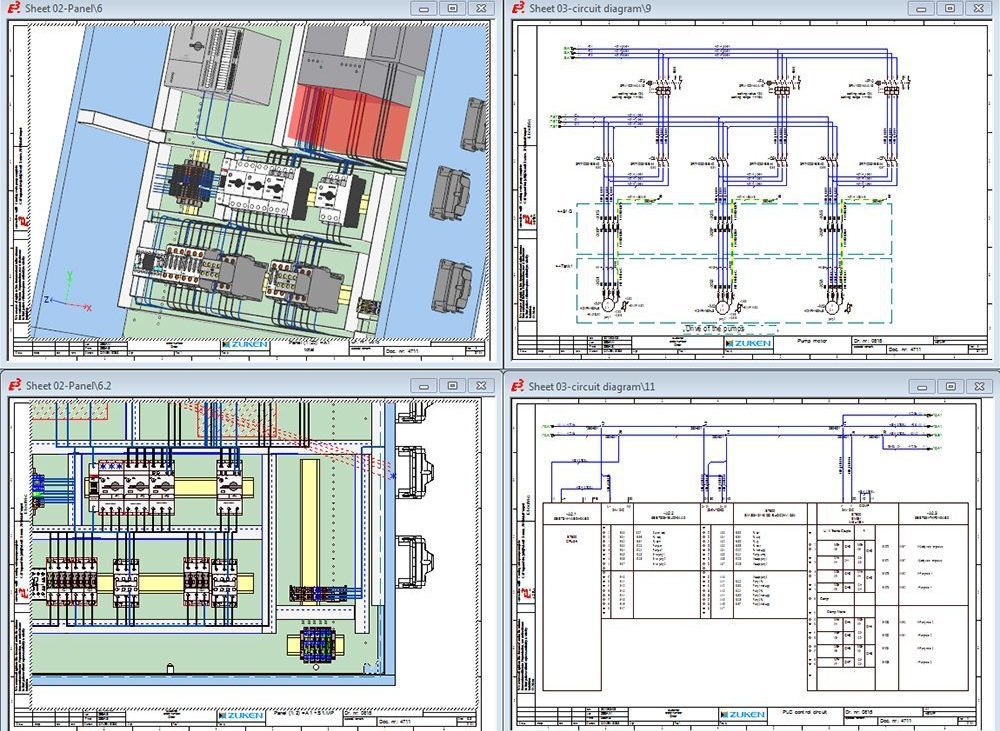High-Quality Electrical Design Services for Commercial and Projects
High-Quality Electrical Design Services for Commercial and Projects
Blog Article
Cutting-edge Electric Design Providers for Modern Framework
As urban environments expand significantly complex, integrating innovations such as wise grids and sustainable energy resources comes to be critical. These developments not only assure to optimize energy intake however additionally foster resilience against future demands.
Value of Cutting-edge Electric Design
Cutting-edge electric design plays an essential duty in contemporary facilities, affecting not only effectiveness however likewise sustainability. As cities evolve and the need for energy increases, the requirement for sophisticated electric systems becomes critical. These systems need to not only satisfy present demands however additionally anticipate future development and technical developments.
A well-executed electrical design can considerably decrease energy consumption, thereby lowering operational expenses and minimizing environmental effect. By incorporating eco-friendly power resources, such as solar panels and wind generators, innovative styles can enhance energy independence and durability. In addition, smart grid technologies permit real-time surveillance and management of energy circulation, enhancing efficiency and decreasing waste.
Security is an additional crucial element of electrical design. Implementing extensive requirements and advanced technologies can alleviate threats related to electrical failings, ensuring a safe and secure setting for residents and companies alike. Furthermore, ingenious styles facilitate versatility, allowing facilities to incorporate arising technologies effortlessly.
Key Fads in Electric Design
As the landscape of electric design proceeds to advance, a number of key patterns are shaping the future of the sector. One significant trend is the combination of wise innovation right into electric systems. The expansion of the Web of Points (IoT) has actually enabled real-time tracking and control of electrical tools, improving efficiency and facilitating predictive upkeep.
One more pattern is the expanding focus on modular design. This approach permits scalable and flexible remedies, allowing framework to adjust to changing needs without extensive improvements. Furthermore, using advanced simulation tools and Building Details Modeling (BIM) is ending up being progressively prevalent, streamlining the design process and enhancing cooperation among stakeholders.
Moreover, innovations in materials scientific research are bring about the growth of lighter, much more durable, and energy-efficient parts. This development is particularly important for high-performance buildings and framework tasks.
Finally, there is a marked change in the direction of data-driven decision-making - electrical load calculation. Leveraging information analytics aids developers optimize systems for efficiency and cost-effectiveness. With each other, these fads signify a transformative era in electrical design, boosting performance, sustainability, and strength in modern framework
Lasting Energy Solutions
Sustainable power options are increasingly becoming a crucial emphasis in electrical design, mirroring a wider commitment to ecological obligation and resource efficiency. These services intend to reduce ecological effect while optimizing power intake in various facilities, from property structures to big industrial facilities.
Among the leading strategies includes the integration of sustainable energy resources, such as solar panels and wind turbines, right into electric systems. This not just decreases dependence on fossil fuels however also improves power strength. In addition, cutting-edge power storage space systems, such as advanced batteries, make it possible for efficient administration and circulation of power, making sure that excess power generated during height production can be used during high demand periods.
In addition, energy-efficient design practices are being adopted to enhance general system efficiency. This includes using energy-efficient lights, HVAC systems, and wise building innovations that keep an eye on and adapt power use based on occupancy and environmental conditions.
Smart Grid Technologies
The execution of sustainable power remedies naturally leads to the exploration of clever grid innovations, which play a pivotal role in modernizing electric systems. Smart grids take advantage of advanced communication technologies and information analytics to improve the integrity, effectiveness, and sustainability of electrical energy distribution. By integrating digital innovation with typical grid infrastructure, these systems assist in real-time surveillance, automated control, and improved decision-making capabilities.
One of the essential features of clever grids is their capability to fit renewable resource resources, such as solar and wind power. This versatility i loved this not just decreases reliance on nonrenewable fuel sources however additionally permits a more decentralized energy production model. Furthermore, wise grids allow need response programs, where consumers can change their energy use based on real-time prices, thus advertising energy preservation and reducing peak load needs.
Furthermore, clever grid modern technologies boost grid durability by making it possible for quicker recognition and resolution of web link blackouts, ultimately decreasing downtime. With anticipating upkeep and analytics, utilities can boost and maximize procedures solution shipment. As cities and communities proceed to progress, clever grid innovations are necessary for developing a sustainable and effective electrical framework that satisfies the needs of modern society.

Future-Proofing Framework
To make sure long-term feasibility and flexibility, future-proofing infrastructure is crucial in the rapidly developing landscape of electric design solutions. As technology developments and energy needs shift, it is essential that electrical systems are created with flexibility in mind. This entails integrating scalable options that can fit future upgrades without demanding comprehensive overhauls.

In addition, sustainability should be a keystone of future-proofed layouts. Utilizing renewable resource sources, such as solar and wind, and maximizing energy performance minimize dependence on nonrenewable fuel sources, straightening with worldwide initiatives to battle climate change.
Verdict
To conclude, ingenious electrical design services play a critical duty fit modern-day facilities. By prioritizing effectiveness, versatility, and sustainability, these solutions address the developing demands of power systems. The integration of smart news grid technologies and sustainable power remedies improves resilience and lowers functional expenses. Future-proofing infrastructure via sophisticated simulation tools and modular techniques makes certain that electric systems stay receptive to changing needs, eventually contributing to an extra lasting and energy-independent future.
A well-executed electrical design can significantly minimize power usage, consequently decreasing functional prices and lessening ecological influence. By incorporating renewable power resources, such as solar panels and wind turbines, ingenious designs can enhance energy independence and strength. Additionally, innovative energy storage space systems, such as sophisticated batteries, enable effective monitoring and circulation of energy, guaranteeing that excess energy generated throughout peak production can be utilized throughout high demand periods.
Wise grids make it possible for demand action programs, where customers can readjust their power use based on real-time pricing, thereby promoting energy conservation and lowering peak load demands. (residential electrical design)
As technology breakthroughs and power demands change, it is critical that electric systems are made with adaptability in mind.
Report this page